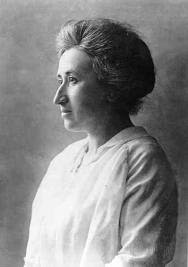No Woman, No
Revolution, Part 3a
3CCI
gets it wrong
The Third Congress of the Communist International (3CCI), 22
June to 12 July 1921, seems to have had a peculiar flavour to it, if the
documents on women from that congress (linked below) are anything to go by.
Whereas the 2CCI of the previous year had shown its
awareness of the necessity of democratisation, so as to create a collective
“Subject of History” out of the unorganised masses, in 1921 the situation was
practically the reverse, at least as far as the women were concerned.
“The III Congress of
the Communist International is firmly opposed to any kind of separate women’s
associations in the Parties and trade unions, or special women’s
organisations.”
Instead, women’s “departments” were to be formed within the
communist parties to carry out various prescribed tasks in relation to women,
which appeared to consist mainly of telling the women what to do.
It starts with “educating
the broad mass of working women in Communist ideas”. This sounds like
indoctrination (or “inculcation”) more than education.
In these theses on work among women, there is a lot that is
more general, for example: “The working
class must adhere firmly and without hesitation to the tactics outlined by the
III International.”
These comrades had become bold on the back of the October
Revolution of 1917. They felt entitled or even duty-bound, to take charge and
to send out categorical and detailed orders to the women of the world that must
be obeyed strictly and without hesitation.
“It is in the
interests of the working class that women are drawn in to the organised ranks
of the proletariat as it fights for Communism.”
These comrades had no sense of anything else than “fight”,
followed by communism. They had no sense of contradiction between their own
prescriptive, dictatorial, unashamedly “top-down” hierarchy of power, and the
withering away of the state envisaged by Lenin in The State and Revolution just
four years earlier, meaning un-coerced self-management of and by the masses.
The democratic formation of the collective mass Subject of
History was not a problem to the delegates of the 3CCI. They would supply the
necessary will-power. If that meant the resurrection of the State, then so be
it, they thought.
Thus it came to pass that the 3CCI decreed: “…that a special apparatus for
conducting work among women is necessary. This apparatus must consist of
departments or commissions for work among women, attached to every Party
committee at all levels, from the CC of the Party right down to the urban,
district or local Party committee. This decision is binding on all Parties in
the Communist International.”
The document is extremely detailed about what these
“departments” are supposed to do.
What we have here is a mirror image of the feared
bourgeois-feminist domination of the working women, which is the reason why
generalised women’s organisations were not approved of and were effectively
banned for communists by the 3CCI.
According to all this, the women will be bossed, one way or
another: either by the bourgeois feminists, or by the 3CCI’s “departments”.
Nothing in these 3CCI documents speaks of free-willing democratic mass
organisation of and for women.
It is clear from these texts why and how the women could be
left out of the National Democratic Revolutions. A separate study might reveal
that the democratic vitality of the soviets as organs of popular power was
already waning in the Soviet Union in 1921, and that the independence of trade
unions was already under attack (but still being defended by Lenin). The New
Economic Policy was coming into being.
Contradictory movements were in action at one and the same
time, just as they are today. In South Africa, there are no independent
democratic organisations of women, but there are departments; and this applies
almost everywhere in Africa.
[Picture: woman canning worker in the USA]
- The above is to introduce the original reading-text: Women, Principles, Declaration, Resolution, 3CCI, 1921.
- To download any of the CU courses in PDF files please click here.










